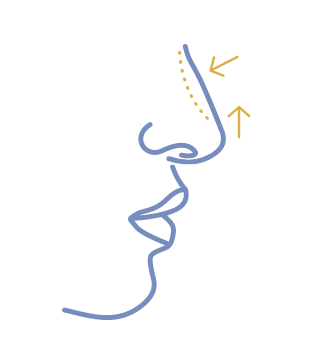Surgery to reshape the nose (rhinoplasty) is one of the most common procedures in plastic surgery. You can have rhinoplasty to improve the appearance of your nose or remove obstructions in your airway or both.
Although nose surgery can enhance your appearance and improve your self-confidence, as with all cosmetic procedures, it will not necessarily change your looks to match your ideal or cause other people to treat you differently. The best candidates for rhinoplasty are those looking for improvement, not perfection in the way they look.
Frequently, alteration to one part of the nose requires adjustments to other parts, and usually the bridge and tip are operated on at the same procedure to match them together. The procedure modifies the shape of the skeleton of the nose which is bony above and cartilage below. Access scars are inside the nose, and usually a scar is placed across the skin bridge between the nostrils (the columella).
